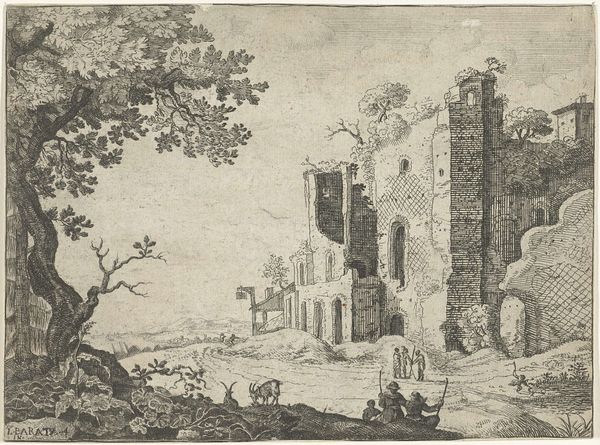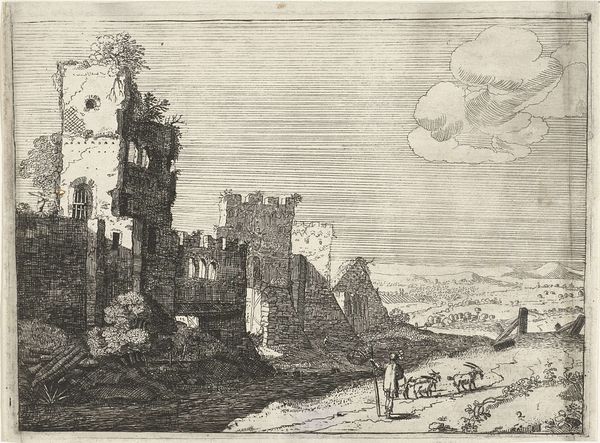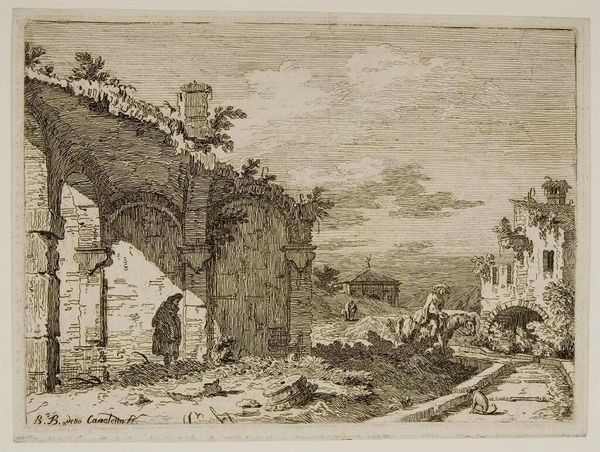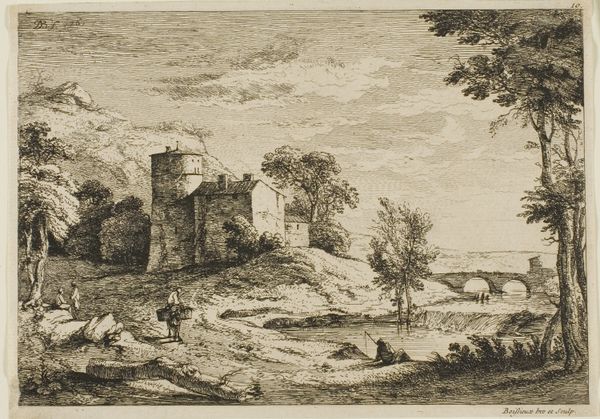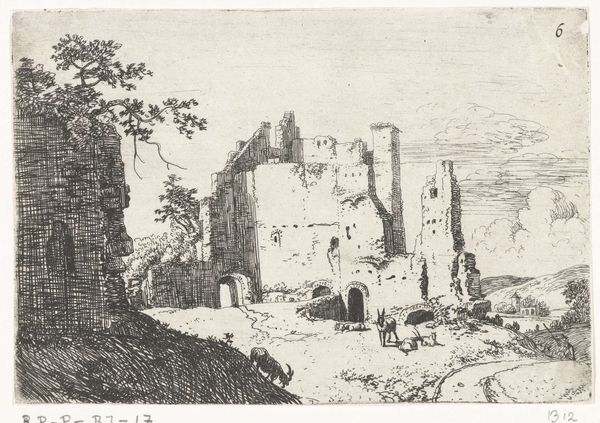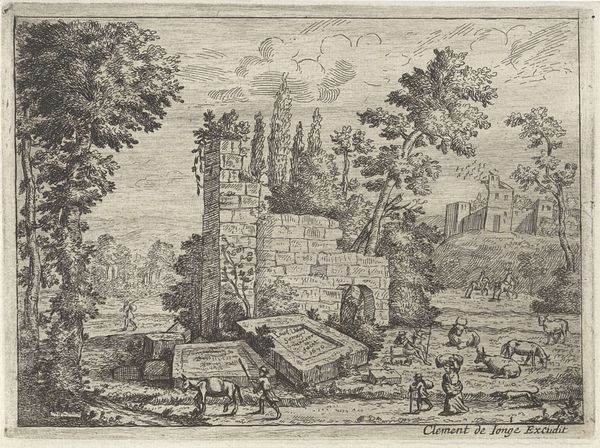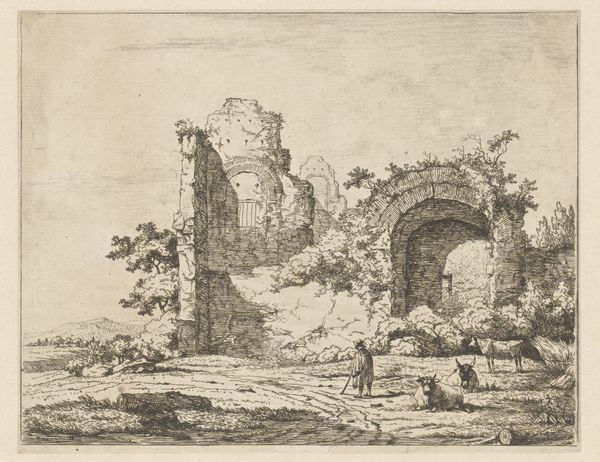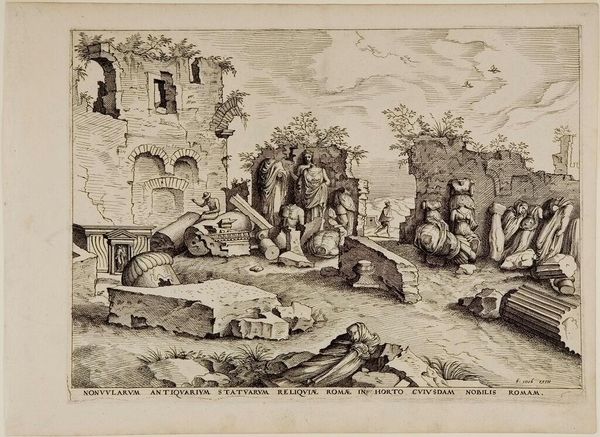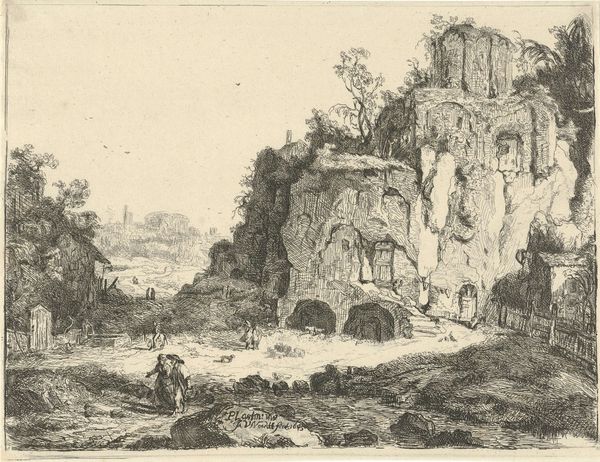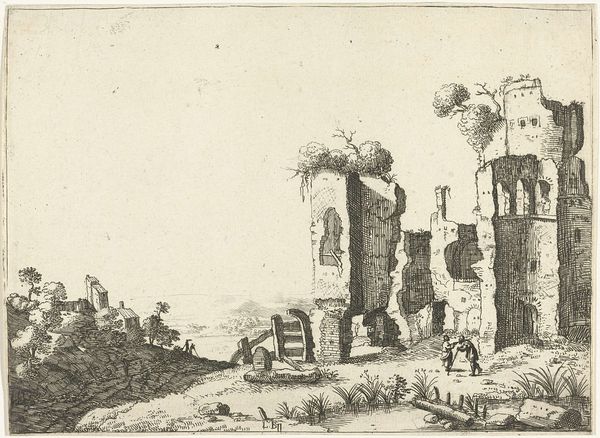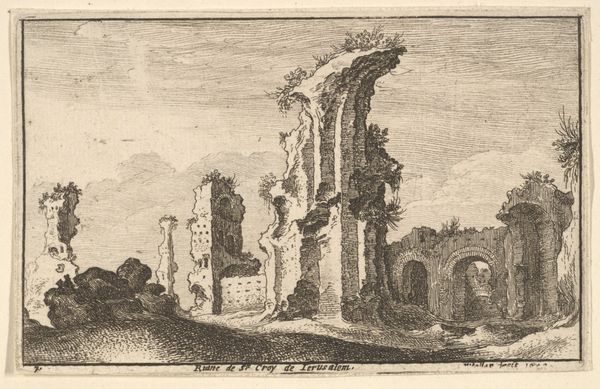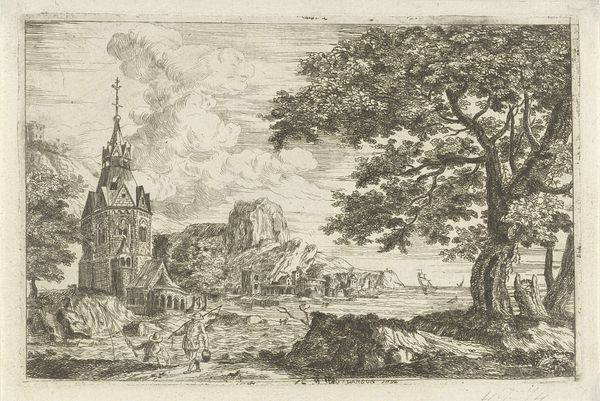
print, etching
#
dutch-golden-age
# print
#
pen sketch
#
etching
#
landscape
#
romanesque
#
cityscape
#
realism
Dimensions: height 170 mm, width 225 mm
Copyright: Rijks Museum: Open Domain
Editor: Here we have Laurens Barata’s etching, "Two Ruins in a Landscape," created before 1656. I'm struck by the way he contrasts the decaying structures with the daily life still bustling around them. It feels like a statement about the passage of time and the ephemerality of power. What do you see in this piece? Curator: It's compelling, isn't it? Barata captures not just the aesthetic of ruins, but also the socio-political context. The ruins themselves are remnants of a Romanesque past, a symbol of a fallen empire. But why are these figures walking amidst the ruins? Could this image be interpreted as a critique of colonialism? The remnants are not simply "landscape," they mark displacement. Editor: I hadn’t thought about it like that. It’s easy to just see it as picturesque, but I guess the artist lived during a time of significant colonial expansion. So you're saying the figures within the landscape may be unwitting agents, or victims, of a repeating historical cycle? Curator: Precisely. Consider the power dynamics embedded in the landscape tradition itself, often used to claim and idealize territories. By depicting ruins overtaken by nature and everyday life, is Barata subtly subverting that tradition, pointing to the cyclical nature of power and the ultimate impermanence of empires? Does this contrast make us reconsider the social cost that arises during reconstruction? Editor: It definitely gives a new weight to what seemed like just an idyllic scene. Thinking about it in terms of power, and loss, is very powerful. Thank you. Curator: It’s vital we continuously contextualize artworks within broader historical and social narratives. This lens expands the narrative.
Comments
No comments
Be the first to comment and join the conversation on the ultimate creative platform.
